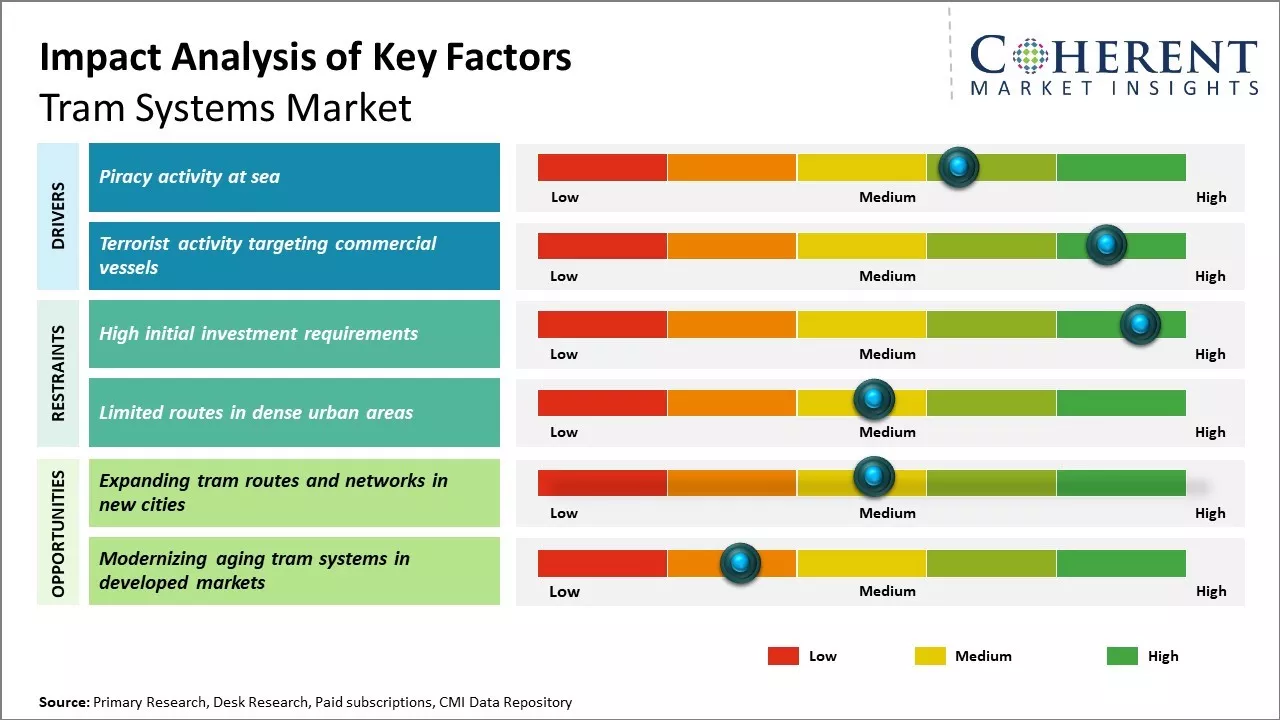The tram systems market is estimated to be valued at USD 136.67 Bn in 2024 and is expected to reach USD 304.72 Bn by 2031, growing at a compound annual growth rate (CAGR) of 12.1% from 2024 to 2031.

To learn more about this report, Request sample copy
The tram systems market is expected to witness positive growth trends over the next few years. With rising urbanization and increased focus on eco-friendly public transportation solutions, many cities across the world are investing in the development of tram networks. Further, advancements in electric vehicle technology and energy storage solutions are making trams more efficient and sustainable. Many new tram projects aimed at enhancing urban connectivity and reducing traffic congestion are either in the development or planning phase. However, high initial infrastructure investment remains a key challenge for expansion of tram systems in new markets. Continued technological innovations to lower project costs and raise operating efficiencies will be critical for future market growth.
Market Drivers: Reducing Traffic Congestion
One of the primary drivers for the growth of the tram systems market is the need to reduce traffic congestion in major urban areas worldwide. Large cities have been experiencing escalating levels of traffic on roads which has led to long commuting times, wasting of productive hours, and increasing air and noise pollution. The overburdened road infrastructure is struggling to handle the exponentially rising number of vehicles, and cities are fast running out of space to expand existing roads or build new highways. Tram systems present a viable solution to ease traffic congestion by providing an alternative mode of transportation.
Trams have a much higher passenger carrying capacity compared to other transport vehicles like buses, and take up less space on roads than individual cars. A single tram can carry hundreds of people in one go, thus reducing the number of vehicles on the roads. Trams also run on designated tracks which are separate from regular traffic flows, eliminating bottlenecks. This ensures a reliable and consistent travel time for commuters. As more people shift to using trams for their daily commute needs, it substantially cuts down the vehicle traffic volumes. Cities are actively investing in expanding metro and tram networks to offer residents efficient public transportation options for intra-city travel without having to rely on private vehicles. Many urban planning authorities are promoting trams as a vital component of integrated multi-modal transport systems to ease the strain on existing road infrastructure.

To learn more about this report, Request sample copy
Environmental SustainabilityAnother major factor driving the adoption of tram networks globally is the push towards more environmentally sustainable transportation. With the looming threats of climate change and depletion of non-renewable energy sources, governments and citizens alike are focusing on transitioning to greener modes of travel. Trams present an eco-friendly alternative to private vehicles which are one of the biggest sources of harmful emissions and air pollution in crowded cities. A single tram can replace hundreds of gasoline or diesel-fueled cars on the road, resulting in significantly lower greenhouse gas emissions and carbon footprint. Moreover, trams are powered through overhead cables sourcing electricity from the main grid. As more cities upgrade their power infrastructure to integrate renewable energy sources, trams will progressively become even more sustainable.
Moving bulk volumes of people through electrically-powered and energy-efficient public transit like trams also reduces dependence on fossil fuels and oil imports. It supports national energy security aims.
Joining thousands of companies around the world committed to making the Excellent Business Solutions.
View All Our Clients